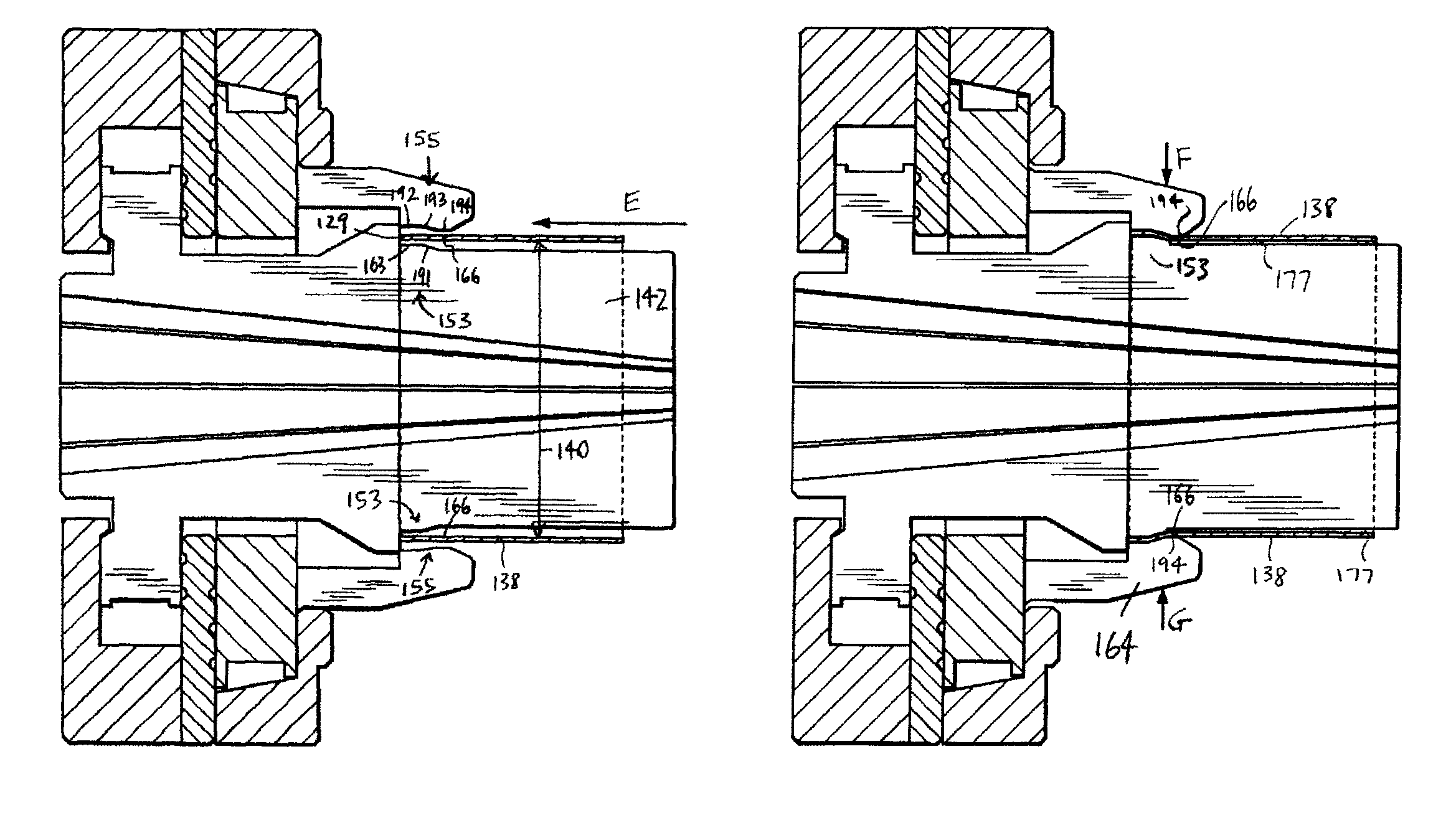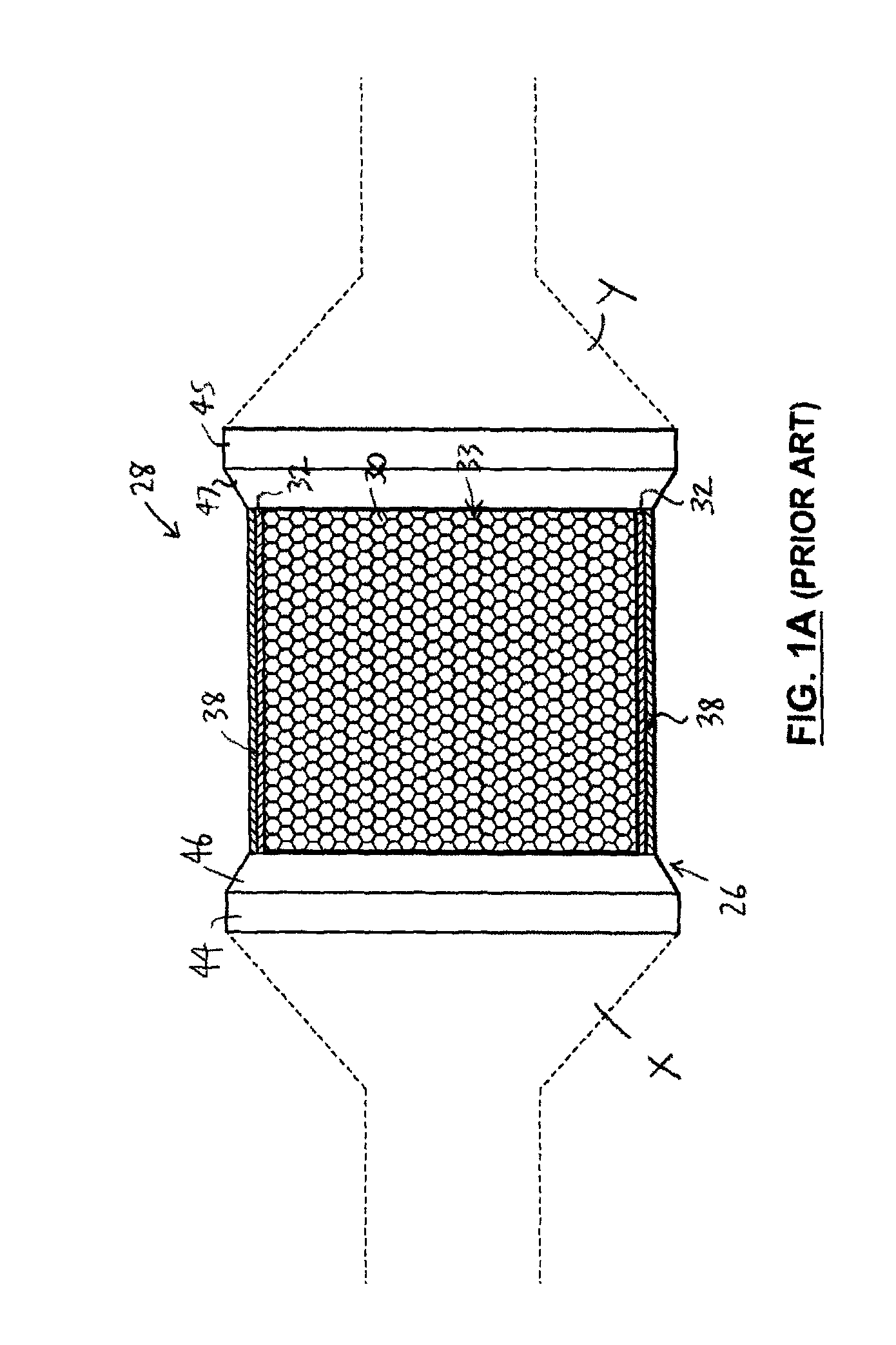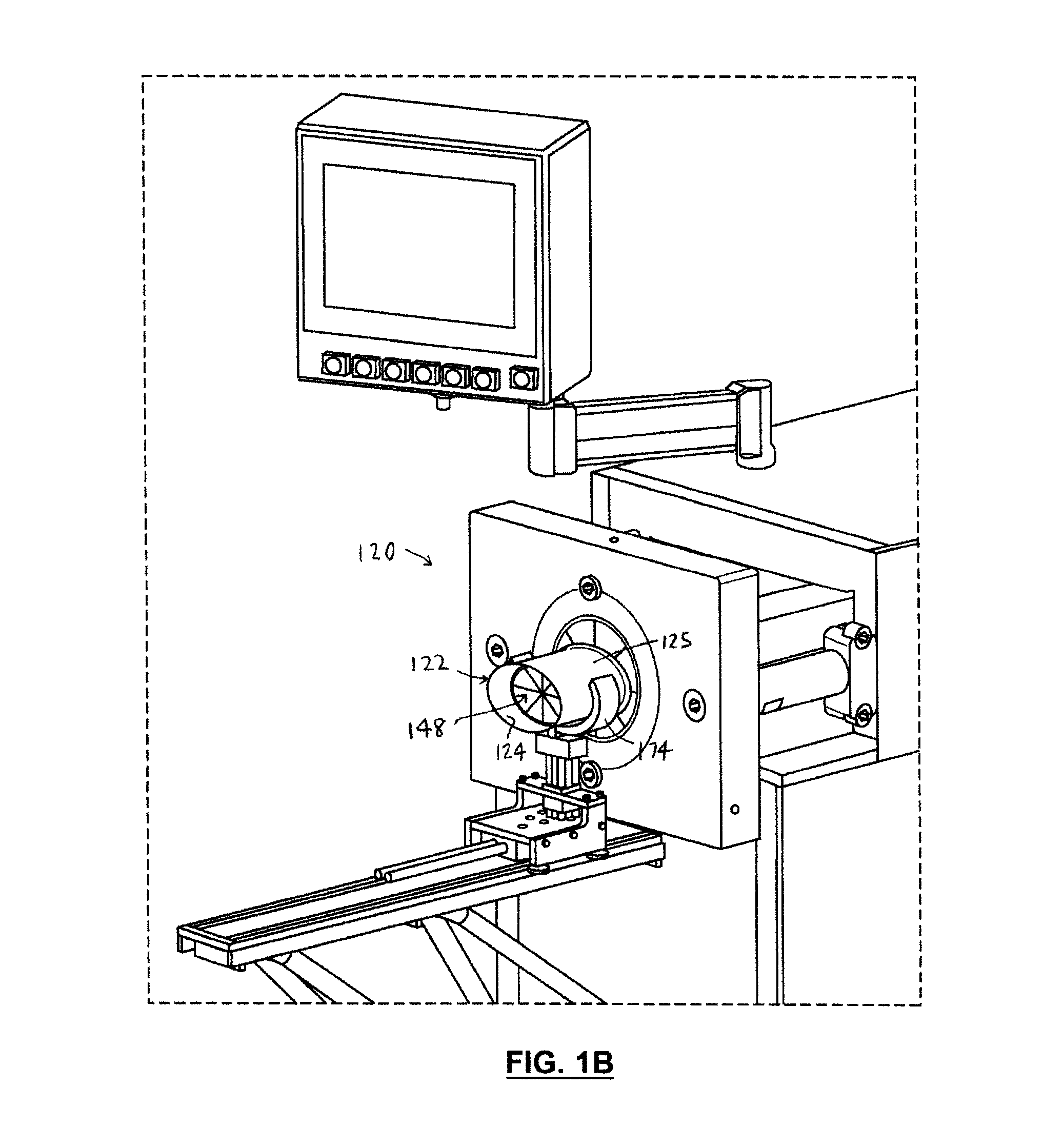Apparatus and method for forming an antipollution device housing
a technology of anti-pollution device and housing, which is applied in the field of apparatus and a method of forming an anti-pollution device housing, can solve the problems of affecting the environment, affecting the quality of the housing, and affecting the operation of the anti-pollution device, so as to achieve the effect of resisting deformation of the formed chamber
- Summary
- Abstract
- Description
- Claims
- Application Information
AI Technical Summary
Benefits of technology
Problems solved by technology
Method used
Image
Examples
Embodiment Construction
[0084]To simplify the description, the numerals used previously in describing FIG. 1A will be used again, except that each such numeral is raised by 100 (or multiples thereof, as the case may be), where the parts described correspond to parts already described.
[0085]Reference is first made to FIGS. 1B-8B to describe an embodiment of an apparatus 120 of the invention. The apparatus 120 (FIG. 1B) is for forming a workpiece 122 with one or more inner surfaces 124 and an opposed outer surface 125 into a hollow housing 126 (FIG. 1D) of an antipollution device 128 for treating exhaust in which one or more preselected catalyst-bearing bricks 130 is positionable, and in which one or more mats 132 are also positionable between the brick 132 and the housing 126 to support the brick 132 (FIG. 1C). At least part 127 of the inner surface 124 defines an initial chamber 136 in the workpiece 122 with an initial dimension 137 (FIG. 2A). (For clarity of illustration, the workpiece is illustrated twic...
PUM
| Property | Measurement | Unit |
|---|---|---|
| density | aaaaa | aaaaa |
| dimension | aaaaa | aaaaa |
| time | aaaaa | aaaaa |
Abstract
Description
Claims
Application Information
 Login to View More
Login to View More - R&D
- Intellectual Property
- Life Sciences
- Materials
- Tech Scout
- Unparalleled Data Quality
- Higher Quality Content
- 60% Fewer Hallucinations
Browse by: Latest US Patents, China's latest patents, Technical Efficacy Thesaurus, Application Domain, Technology Topic, Popular Technical Reports.
© 2025 PatSnap. All rights reserved.Legal|Privacy policy|Modern Slavery Act Transparency Statement|Sitemap|About US| Contact US: help@patsnap.com



